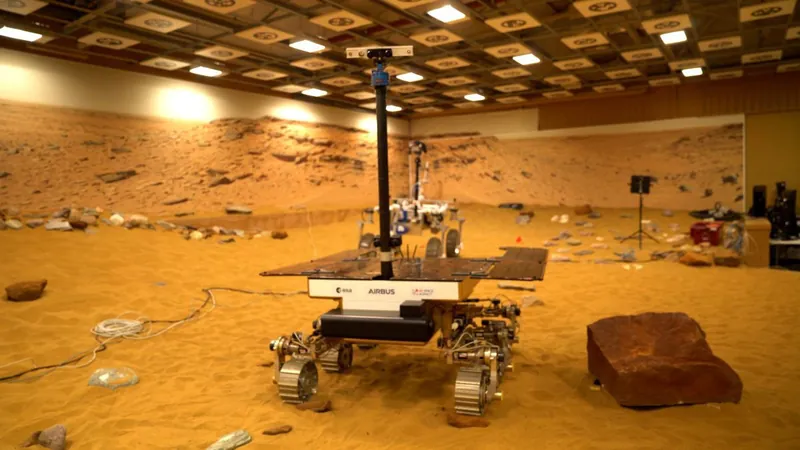
The Bright Future of Remasters in Gaming: Why They’re Changing the Game
2025-01-03
Author: Li
In 2025, it's clear that video games have vaulted into a realm where they can stand shoulder to shoulder with cinema and television. As technology races forward, particularly in graphics and audio, video games have secured a reputation equal to these beloved mediums. The video game industry has flourished since the early 2000s, transforming into a colossal business that vies for the attention and revenue usually reserved for Hollywood and television networks. While interactivity sets video games apart as a unique form of entertainment, remasters of classic games are carving out a significant niche in this thriving market.
Understanding Remasters: Not Just Simple Re-releases
Many gamers often confuse remasters with remakes. While remakes overhaul the entire game experience, including game mechanics and controls, remasters focus on enhancing the existing game without changing the core functionalities. A prime example is The Last of Us Part I (2022), which was a complete reimagining of the original game from 2013. In contrast, The Last of Us Remastered (2014) made subtle enhancements, such as improved character models and audio, while maintaining the original experience. Think of remakes as a home completely rebuilt from the ground up, while remasters are like a fresh lick of paint that revives the original design.
The Visual Marvel of Remasters
One significant boon to gamers is the enhanced aesthetic appeal of remastered titles. The evolution of gaming hardware means that remasters look significantly more polished than their original counterparts. Older consoles were limited in their capabilities, leading to the charming pixelated graphics and compressed audio of early gaming. However, remasters such as Monkey Island 2: LeChuck's Revenge - Special Edition showcase the leap in technology by providing stunning visuals and high-fidelity sound. Witnessing these classics in their remastered glory offers a fresh experience that appeals to both long-time fans and new players alike.
Breaking Barriers: Accessibility of Classic Games
Acquiring vintage gaming consoles and the games that go with them has become increasingly difficult. For instance, despite its lackluster performance, the Wii U hosts some truly fantastic games. However, the console’s limited availability makes it harder to enjoy those titles. Meanwhile, remastered games for current consoles, like the Nintendo Switch, have filled the gap, allowing players access to beloved classics—often with additional downloadable content or enhanced performance features. A perfect example is Mario Kart 8 Deluxe, which brings the thrilling karting experience to a broader audience with smoother gameplay.
A Fresh Take on Familiars
Remasters breathe new life into established titles. They improve visual fidelity and audio quality, making timeless classics more inviting to contemporary audiences. While nostalgic gamers might prefer playing originals for their authenticity, many find remasters to be a practical way to relive those iconic gaming moments. Titles such as Crisis Core: Final Fantasy VII Reunion exemplify this practice; they offer an updated experience that honors the original while taking advantage of modern technology.
Conclusion: Embracing the Remaster Revolution
Fit for a new generation, remasters are reshaping how we engage with gaming history. They provide accessibility, preserve gameplay integrity, and enhance visuals—a trifecta that benefits both developers and players alike. As we move forward in this exciting era, it’s evident that remastered games offer an unparalleled opportunity to revisit and appreciate the rich tapestry of gaming’s past, all while enjoying the breathtaking technological advancements of the present. Whether you're a seasoned gamer or a newcomer, there's never been a better time to explore the world of remastered classics!





 Brasil (PT)
Brasil (PT)
 Canada (EN)
Canada (EN)
 Chile (ES)
Chile (ES)
 Česko (CS)
Česko (CS)
 대한민국 (KO)
대한민국 (KO)
 España (ES)
España (ES)
 France (FR)
France (FR)
 Hong Kong (EN)
Hong Kong (EN)
 Italia (IT)
Italia (IT)
 日本 (JA)
日本 (JA)
 Magyarország (HU)
Magyarország (HU)
 Norge (NO)
Norge (NO)
 Polska (PL)
Polska (PL)
 Schweiz (DE)
Schweiz (DE)
 Singapore (EN)
Singapore (EN)
 Sverige (SV)
Sverige (SV)
 Suomi (FI)
Suomi (FI)
 Türkiye (TR)
Türkiye (TR)
 الإمارات العربية المتحدة (AR)
الإمارات العربية المتحدة (AR)